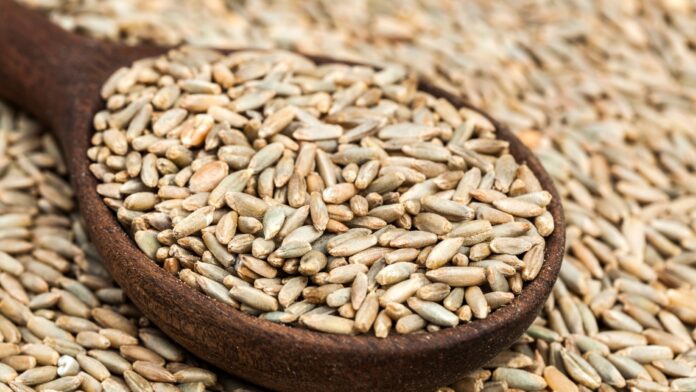Cover crops are an excellent way to improve soil health in your garden or on your farm. They prevent erosion, suppress weeds, and add valuable nutrients to the soil. Popular options include legumes like clover and peas, grasses like rye, and others like radishes. Each type of cover crop serves a unique purpose, from nitrogen fixation to improving soil structure.
1. What Are Cover Crops and Why Use Them?
Cover crops are plants grown primarily to benefit the soil rather than for harvest. They are used during off-seasons, such as fall and winter, when garden beds or fields might otherwise remain bare. Cover crops provide a variety of benefits, including:
- Preventing erosion: Cover crops act as a natural ground cover, protecting the soil from wind and water erosion.
- Improving soil fertility: Many cover crops add nutrients to the soil, particularly nitrogen, which is essential for plant growth.
- Suppressing weeds: Cover crops can smother weeds by outcompeting them for sunlight and space.
- Enhancing soil structure: Some cover crops, particularly deep-rooted ones, help break up compacted soil and improve its texture.
Using cover crops in your rotation ensures that your soil remains healthy and productive year after year, reducing the need for chemical fertilizers and other inputs.
2. Top Cover Crops for Soil Health
Here are some of the best cover crops for improving soil health, along with the specific benefits they provide:
1. Clover (Red Clover, White Clover)
Clover is a legume, which means it has the unique ability to “fix” nitrogen from the atmosphere and store it in its roots, enriching the soil with this vital nutrient.
- What it does: Fixes nitrogen, adds organic matter, and improves soil fertility.
- Best for: Garden beds and fields needing a nitrogen boost for future plantings.
- Planting time: Early spring or fall.
Tip: Red clover is more vigorous and larger, making it ideal for larger areas, while white clover works well for smaller spaces.
2. Winter Rye
Winter rye is a fast-growing grass that can withstand cold temperatures, making it ideal for fall planting. Its dense growth suppresses weeds effectively and its deep roots help prevent soil erosion and improve structure.
- What it does: Suppresses weeds, prevents erosion, and improves soil structure.
- Best for: Large fields, gardens, and areas prone to erosion.
- Planting time: Fall, after harvest, or late summer.
Tip: Winter rye is often used in rotation with vegetables because it helps control weed growth during the colder months.
3. Hairy Vetch
Hairy vetch is another legume known for its nitrogen-fixing capabilities. It grows well in cooler temperatures and is often planted in the fall to add nitrogen and organic matter to the soil in spring.
- What it does: Fixes nitrogen, adds organic matter, and helps prevent erosion.
- Best for: Poor soils needing a nitrogen boost and weed suppression.
- Planting time: Fall.
Tip: Mix hairy vetch with other cover crops like winter rye to maximize soil benefits.
4. Daikon Radish (Tillage Radish)
Daikon radishes, also known as tillage radishes, have long taproots that can break up compacted soil and improve drainage. These radishes decompose quickly, adding organic matter and creating channels for air and water movement in the soil.
- What it does: Breaks up compacted soil, improves drainage, and adds organic matter.
- Best for: Heavy or compacted soils needing loosening and aeration.
- Planting time: Late summer to early fall.
Tip: Plant daikon radish before the ground freezes, and let them decompose over the winter for best results.
5. Buckwheat
Buckwheat is a fast-growing summer cover crop that quickly suppresses weeds and improves soil health. It grows best in warm conditions and is commonly used between spring and summer planting.
- What it does: Suppresses weeds, attracts pollinators, and adds organic matter.
- Best for: Short growing periods or filling gaps in crop rotation.
- Planting time: Late spring to early summer.
Tip: Buckwheat flowers attract pollinators, making it an excellent choice for gardeners looking to enhance pollinator presence while improving their soil.
3. How Cover Crops Improve Soil Health
Each cover crop type plays a role in improving different aspects of soil health. Here’s how they work:
- Nitrogen Fixation: Leguminous cover crops, like clover and hairy vetch, have symbiotic relationships with nitrogen-fixing bacteria in their roots. These bacteria convert atmospheric nitrogen into a form that plants can use, enriching the soil with this essential nutrient when the cover crops decompose.
- Organic Matter: Cover crops, especially those with dense roots like rye and buckwheat, increase the amount of organic matter in the soil as they break down. Organic matter improves soil structure, water retention, and nutrient availability.
- Erosion Control: Plants like winter rye grow thick and dense, providing excellent ground cover that holds soil in place. Their roots bind the soil and protect it from being washed or blown away by rain or wind.
- Soil Aeration and Compaction: Deep-rooted cover crops, such as daikon radishes, naturally loosen compacted soil. Their roots penetrate hard soil layers, creating channels that allow air, water, and nutrients to move more freely. When the roots decompose, they leave behind organic matter, further improving the soil’s texture.
- Weed Suppression: Fast-growing cover crops, like buckwheat and winter rye, crowd out weeds by covering the soil and blocking sunlight. This natural weed suppression reduces the need for herbicides and minimizes competition for nutrients.
4. How and When to Plant Cover Crops
Planting cover crops at the right time and in the right way ensures they provide maximum benefits. Follow these steps for success:
- Timing:
- Plant cool-season cover crops like rye, clover, and vetch in late summer or early fall after your main crops have been harvested.
- For warm-season cover crops like buckwheat, plant in late spring to early summer.
- Planting:
- Broadcast the seeds evenly over your garden bed or field.
- Lightly rake the soil to cover the seeds and water them in.
- If planting in rows, ensure that rows are spaced according to the specific crop’s requirements (often 6-12 inches apart).
- Terminating Cover Crops: Before planting your main crops, terminate cover crops by mowing them down, tilling them under, or letting them naturally decompose into the soil. Allow at least 2-3 weeks for the cover crop to decompose fully before planting your next crop.
Tip: To avoid competition with your spring or summer crops, always terminate cover crops before they go to seed.
Benefits Summary:
- Nitrogen fixation: Clover and hairy vetch naturally add nitrogen to the soil.
- Weed suppression: Fast-growing crops like rye and buckwheat crowd out weeds.
- Soil aeration: Daikon radishes break up compacted soil and improve drainage.
- Erosion control: Grasses like winter rye protect the soil from wind and water erosion.









